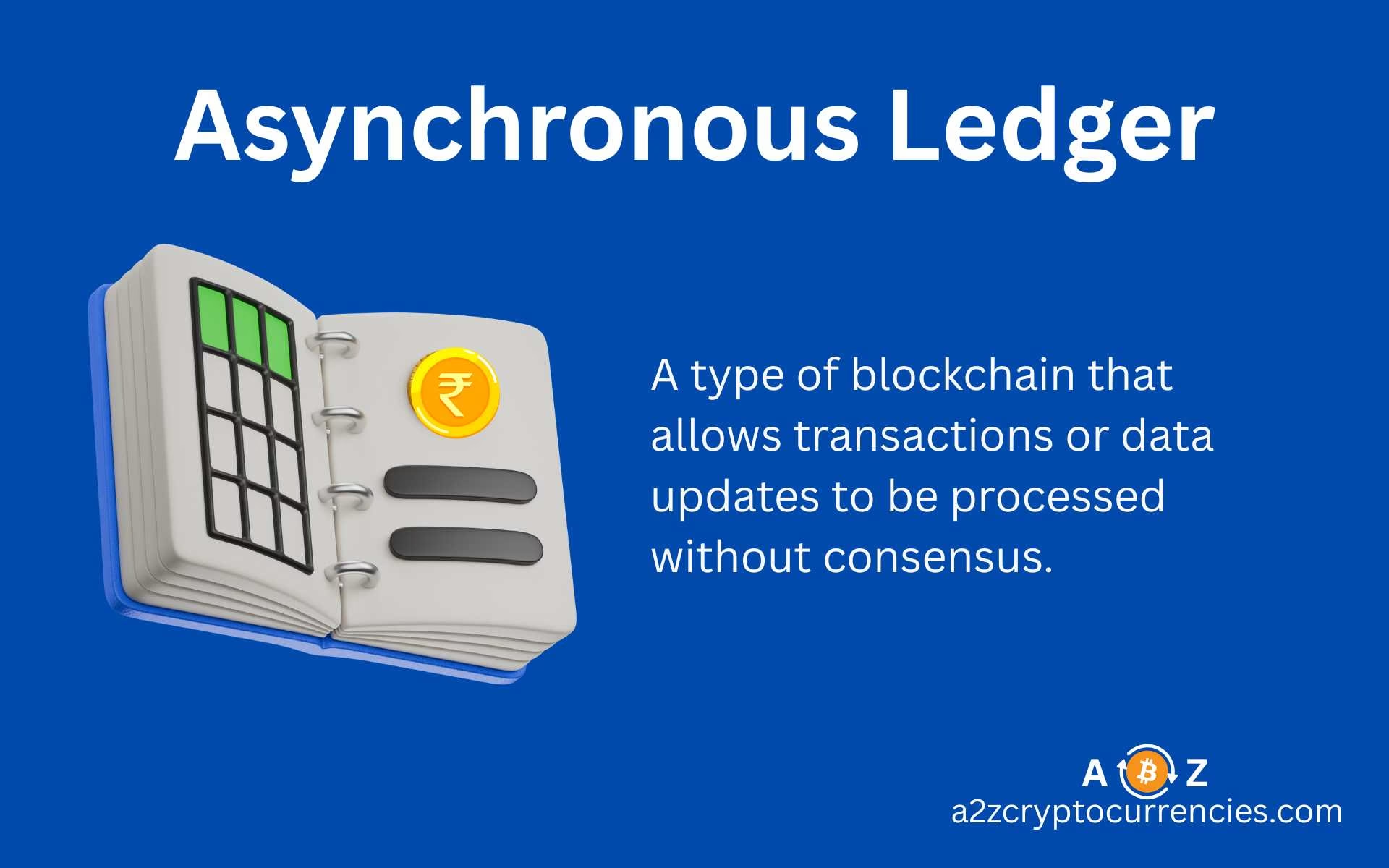An asynchronous ledger is a type of blockchain that allows transactions or data updates to be processed without the need for immediate consensus among all participants in the network.
Example: Terachain
This approach contrasts with synchronous ledgers like Bitcoin and Ethereum, where all nodes must agree on the state of the ledger before proceeding with any transactions.
Table of Contents
Key Features
- Decoupled Processing: Transactions can be added to the ledger at different times, allowing for more flexible and scalable operations.
- Increased Efficiency: Asynchronous ledgers can improve throughput and reduce latency since nodes do not need to wait for all others to validate a transaction.
- Enhanced Scalability: By allowing multiple transactions to be processed simultaneously, asynchronous ledgers can support a higher volume of transactions.
- Fault Tolerance: This type of ledger can continue to operate even if some nodes are temporarily unavailable or slow to respond, increasing the overall resilience of the network.
Use Cases
- Interoperability: Asynchronous ledgers can facilitate communication and data exchange between different blockchain networks.
- Real-Time Data Processing: Useful for applications requiring immediate data updates, such as supply chain management or financial transactions.
- Decentralized Applications (dApps): Asynchronous ledgers can enhance the performance of dApps by allowing them to interact with the blockchain without waiting for transaction confirmations.
Challenges Ahead
- Consensus Mechanisms: Establishing a reliable consensus mechanism can be more complex since not all transactions are immediately validated by all nodes.
- Security Considerations: The asynchronous nature may introduce vulnerabilities, requiring robust security measures to prevent double-spending or fraud.




